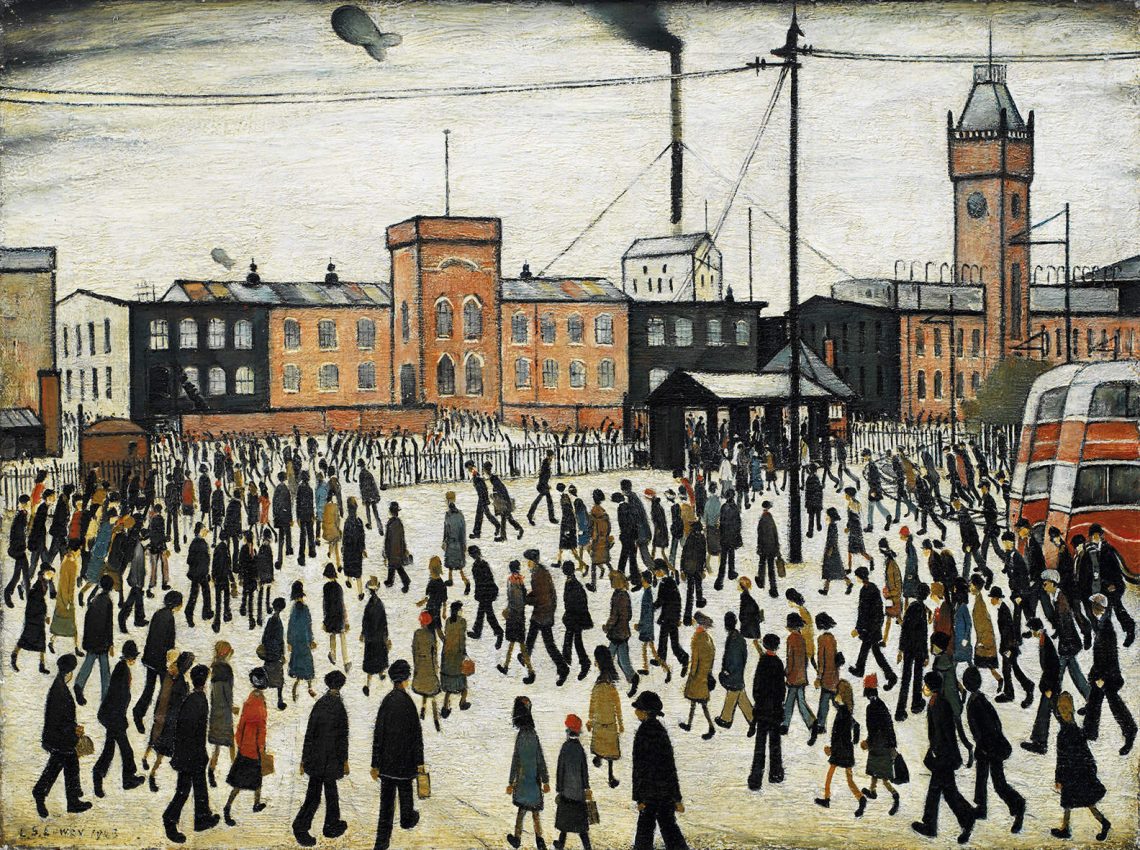Nestled within the industrial landscape of Greater Manchester, the artistic legacy of Laurence Stephen Lowry, more commonly known as L. S. Lowry, continues to captivate audiences worldwide. Renowned for his distinctive depictions of industrial scenes and urban life, Lowry’s paintings offer a unique perspective on the working-class communities of the Manchester area. In this exploration, we delve into the life, work, and enduring impact of one of Britain’s most celebrated artists.
Early Life and Influences
Born on November 1, 1887, in Stretford, Lancashire, Lowry spent much of his life in the Greater Manchester area. Growing up in a family steeped in industrial heritage, his surroundings would deeply influence his artistic sensibilities. The bustling factories, crowded streets, and towering mill chimneys that dominated the Manchester skyline served as constant sources of inspiration for the young Lowry.
Despite his passion for art, Lowry’s formal education in the arts was limited. He initially trained as a clerk, working full-time while pursuing his artistic interests in his spare time. However, his dedication and talent soon caught the attention of local artists and critics, paving the way for his eventual success.
Distinctive Style and Subject Matter
Lowry’s artistic style is characterized by its simplicity, yet profound depth and emotional resonance. He employed a unique palette of muted colors, often using a limited range of pigments to create his iconic industrial landscapes. His compositions typically feature crowds of stick-like figures, set against a backdrop of factories, terraced houses, and smoke-filled skies.
While Lowry’s subject matter may appear bleak to some, his paintings exude a sense of warmth and humanity. His keen eye for detail and subtle nuances of light and shadow infuse his work with a sense of nostalgia and quiet dignity. Through his art, Lowry captured the essence of working-class life in the Manchester area, immortalizing its people and places for future generations to admire.
Recognition and Legacy
Although Lowry’s work initially received mixed reviews from critics, he continued to paint with unwavering dedication and passion. His breakthrough came in 1930 when his painting “Coming from the Mill” won first prize at the Manchester Academy of Fine Arts exhibition. This recognition catapulted Lowry into the spotlight, earning him widespread acclaim and establishing his reputation as a leading figure in British art.
Throughout his career, Lowry remained devoted to his distinctive style, eschewing trends and fads in favor of authenticity and integrity. His paintings resonated deeply with audiences, transcending geographical and cultural boundaries to become beloved icons of British art. Today, his works are celebrated in galleries and museums around the world, with exhibitions dedicated to his life and legacy drawing crowds of admirers.
Lowry’s influence extends far beyond the realm of art, permeating popular culture and inspiring countless artists, writers, and filmmakers. His distinctive style and subject matter have left an indelible mark on the collective imagination, shaping our perception of industrial Britain and the communities that inhabited it. From his humble beginnings in the Manchester area to his enduring legacy on the global stage, Lowry’s artistic brilliance continues to shine brightly, reminding us of the power of art to illuminate the human experience.







